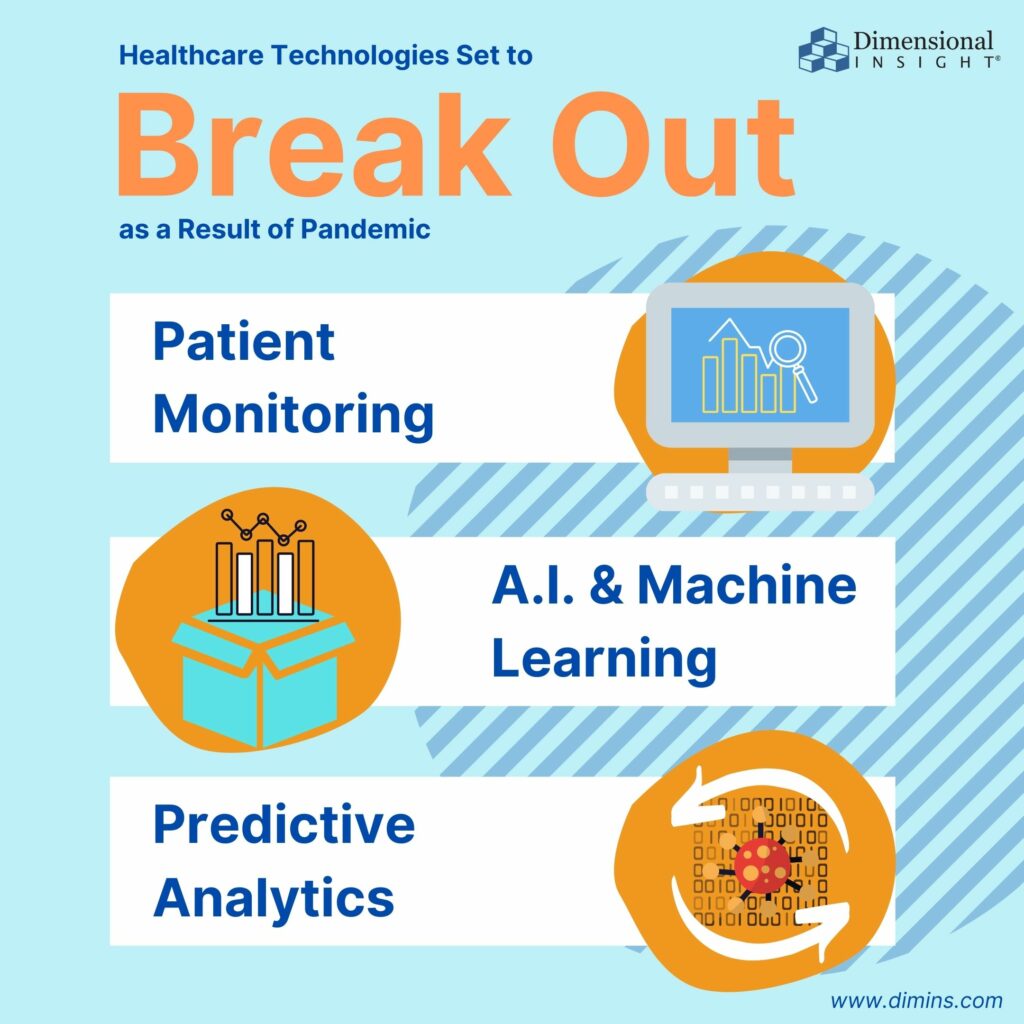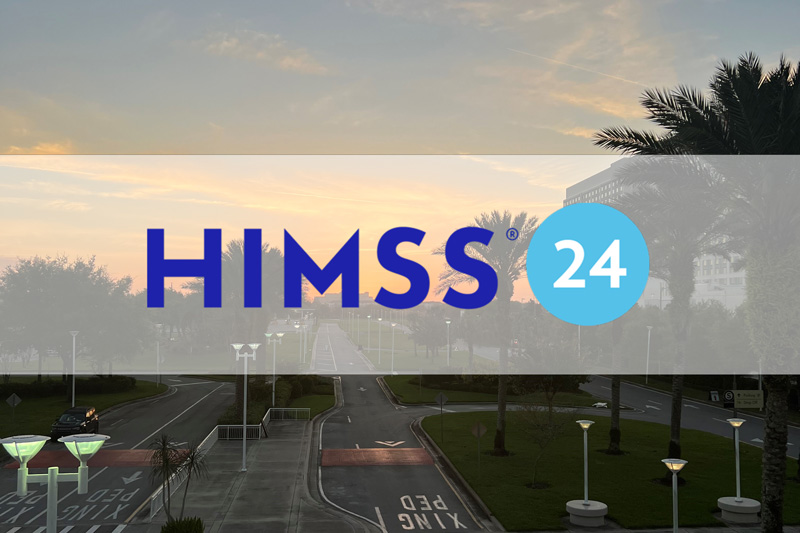A pandemic lights the fire for change at a health system in a way that no other entity could ever accomplish. For years, experts have been calling for greater data integration and implementation across health systems. Now that caregivers have been forced to socially distance themselves from patients, the call has been answered in ways that were previously unheard of in the world of health data analytics and telehealth communication.
The prevalence of smarter and more data literate hospitals means that patients receive a safer and more personalized experience with healthcare. But let’s back up a minute to see how health systems have changed in the last four months and how data integration is key to all of these initiatives.
How did we get here?
The pandemic has put two new stresses on the American health system, both of which necessitate greater technological and data capabilities for hospitals to safely and effectively treat patients. Most importantly, the pandemic has created a need for smart population health technology to treat COVID-19. On top of this, a highly transmissible virus being treated in a hospital changes the risk-reward proposition for those who need to be treated for non-COVID issues. For this reason, more patients than ever need to be interacted with remotely.
These two stresses mean that hospitals must rapidly adapt to technologies that they have not been accustomed to. The government adapted by altering its policy on a national level. At the outset of the pandemic, the Department of Health and Human Services (HHS) waived penalties for non-compliant HIPPA communications with patients over telehealth communication services.
The COVID-19 pandemic has forced health systems to transition towards a more digital-based form of patient care. And with the governmental allowances in place, the past few months have been ripe, if not necessary, for caregivers to transition to new technologies that allow them to thrive in socially-distanced circumstances. In this rapidly changing environment, several technologies have risen to the forefront of medical care as a way to safely diagnose patients, identify individuals exposed to the virus, and combat population spread through predictive analytics. All of these technologies require a health system to be data literate and able to effectively manipulate the information they receive from patients.

Patient monitoring
The most apparent need that had to be addressed at the outset of the pandemic was how to drastically ramp up the technology used to monitor patients at home. The CDC has broken down these growing telehealth modalities into two categories: Synchronous and Asynchronous1.
Synchronous patient monitoring allows healthcare providers to gather data in real time, whether through video chat or phone call. Furthermore, HCP can send patients peripheral technologies such as vital sign monitors, digital stethoscopes, probes, and spirometers.2
One step removed from synchronous patient monitoring is asynchronous monitoring. This means that patients provide their information into one location and that data is then transferred, or “stored and forwarded,” to the health system for intake and analysis. Often times this transaction of information takes place through an online patient portal. These telehealth innovations allow a hospital to collect vital information from their patients without endangering health workers or the patients themselves. The rise in telehealth monitoring devices has gone hand in hand with a dramatic turn towards remote service apps. These apps are software that supports synchronous or asynchronous telehealth delivery.
With an increasingly complex data collection method comes the need for healthcare providers to have even greater control over their data. Effective data analytics can aid implementation of telehealth services in combating high patient volume, determining peak usage times, and breaking down diagnoses. All of these gains result in more successful outcomes for patients.
Furthermore, strong data management can aid in transitioning healthcare systems towards value-based reimbursement in a socially distanced environment through interoperability. With information coming from disparate and remote sources, data managers need to transform the diverse data set in the cloud into normalized information for clinicians to analyze4. This process requires interoperability to connect different aspects of a health system along with accurate identification of patients, both of which necessitate strong data management and analytics.
A.I. & machine learning
CNBC’s 2020 Disruptor 50 list had a common theme: companies that committed to building up their cloud connectivity, digital marketing and distribution, and virtual interactions were extremely successful. A majority of these companies have continued to hire through the economic downturn caused by the pandemic. As Julia Boorstin of CNBC points out, “Machine learning and artificial intelligence are hands down the most prevalent of these technologies, with 31 of the Disruptor 50 companies citing machine learning and 30 listing artificial intelligence as essential to their operations.”
C3.ai is one such company on the CNBC Disruptor 50 list that has been harnessing the power of data management and aggregation to fight COVID-19. The C3.ai “data lake” is a unified landing ground for a vast array of data, both structured and unstructured, being produced to fight the pandemic. What separates C3.ai from competitors is its ability to intake an enormous amount of information and create unified and normalized reports for researches to answer vital questions such as outbreak locations, hospital volumes, and supply chain issues6.
From a hospital’s perspective, analytics can be a perfect way to map patients’ journeys through the health system to protect workers and limit inpatient spread of the virus. An effective analytics package within a health system is able to identify those patients who have tested positive for COVID-19 and is able to track which different areas of the hospital they received treatment. This is a vital resource when administrators need to know which areas of their hospital have and have not been exposed to the virus.
From the largest view possible, like C3.ai’s work in population health, to the granularity of tracking patient journeys through a hospital, analytics and computer learning are tools that have become essential to be successful during the pandemic.
Predictive analytics
Predictive analytics, which takes aim at the population health side of the equation, allows health systems to proactively plan for outbreaks of COVID-19.
Children’s Hospital of Philadelphia is one of many hospitals employing a predictive algorithm to get ahead of spikes in virus cases. The algorithm considers weather and humidity data as cases tend to rise with the temperature. In addition, the analytics package uses GPS tracking data to track visits to non-essential businesses7. Both of these sources of information can provide insight into patient volume in the future, which allows health systems to coordinate their supply chain to meet the demands of the virus.
As the pandemic proceeds, remote monitoring, A.I., and predictive analytics will continue to be essential tools in combating the virus. The popularization of these technologies is a silver lining to the extremely large cloud that is COVID-19. But as CNBC points out with their Disruptor 50 list, the most successful companies or health systems have been the ones that invested in data science and management from the beginning. All three of these technologies would fail without the presence of a strong focus on data analytics and it is clear that as healthcare adapts to the new circumstances of a global pandemic, data integration will go hand in hand with other technological developments.
- Data Analytics and Artificial Intelligence in the Race for a Coronavirus Vaccine - September 14, 2020
- The Balance Between Data Insights and Governance on the Path to Returning to Work - August 26, 2020
- Data Analytics and the Fight Against COVID-19 - August 10, 2020



